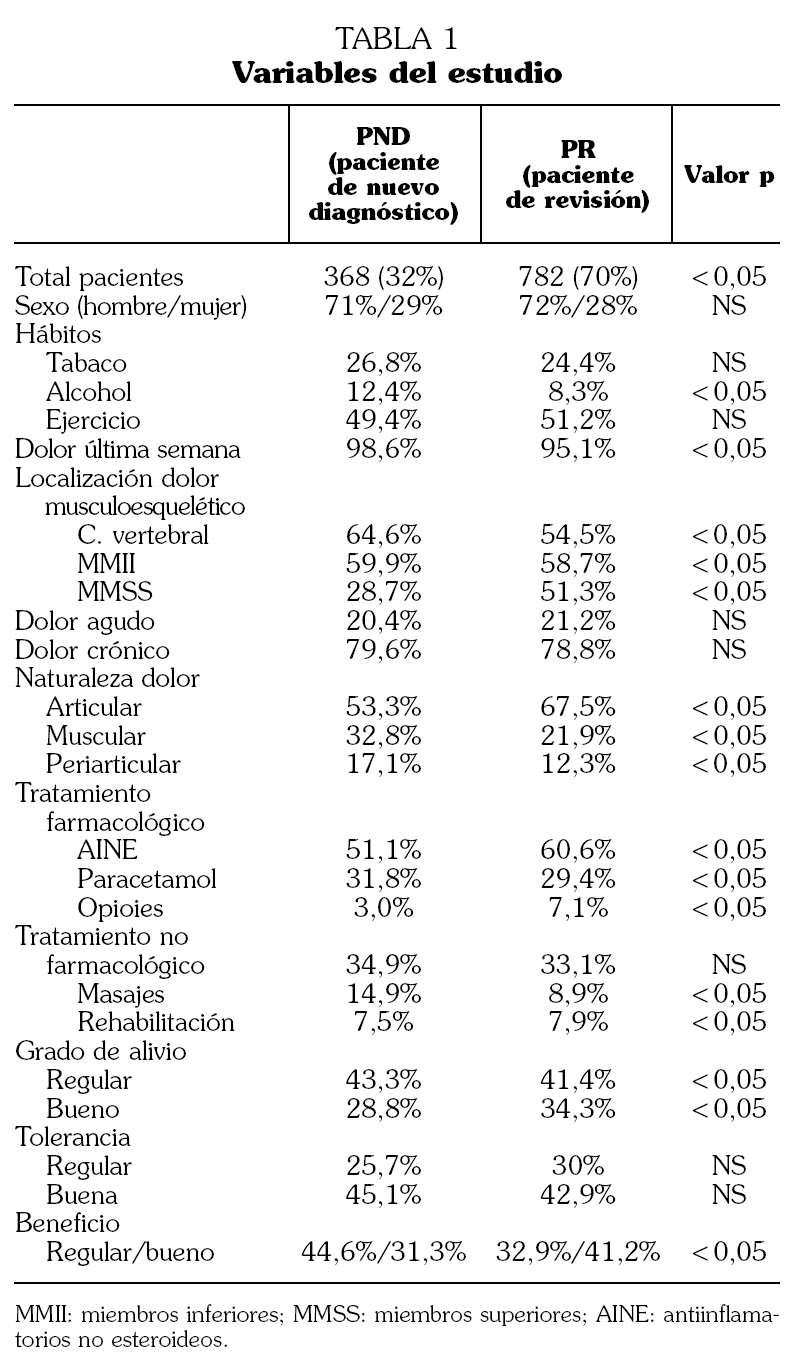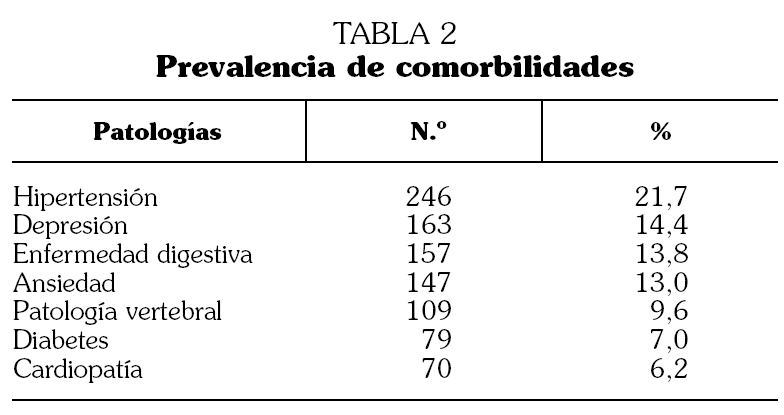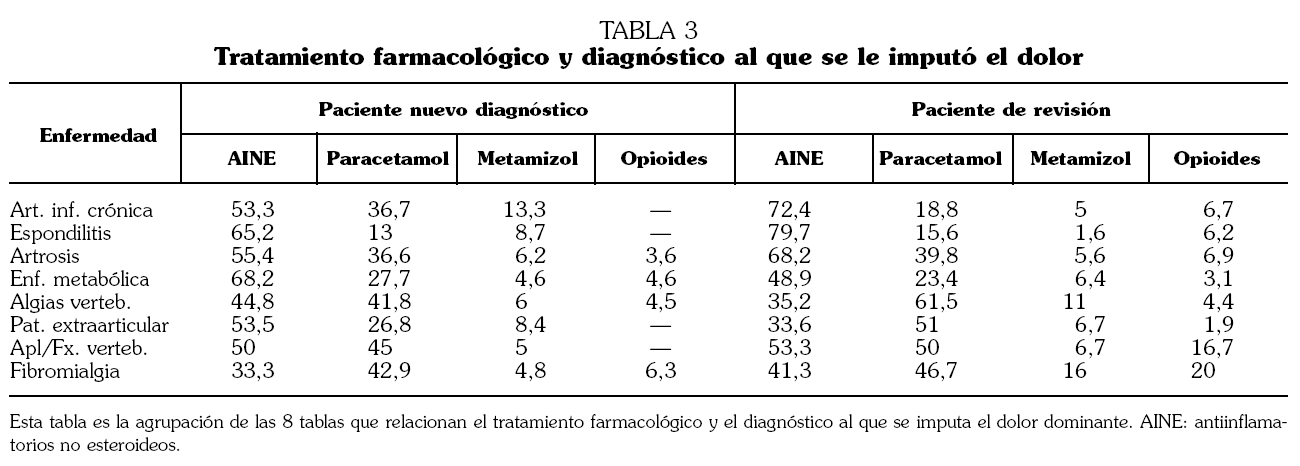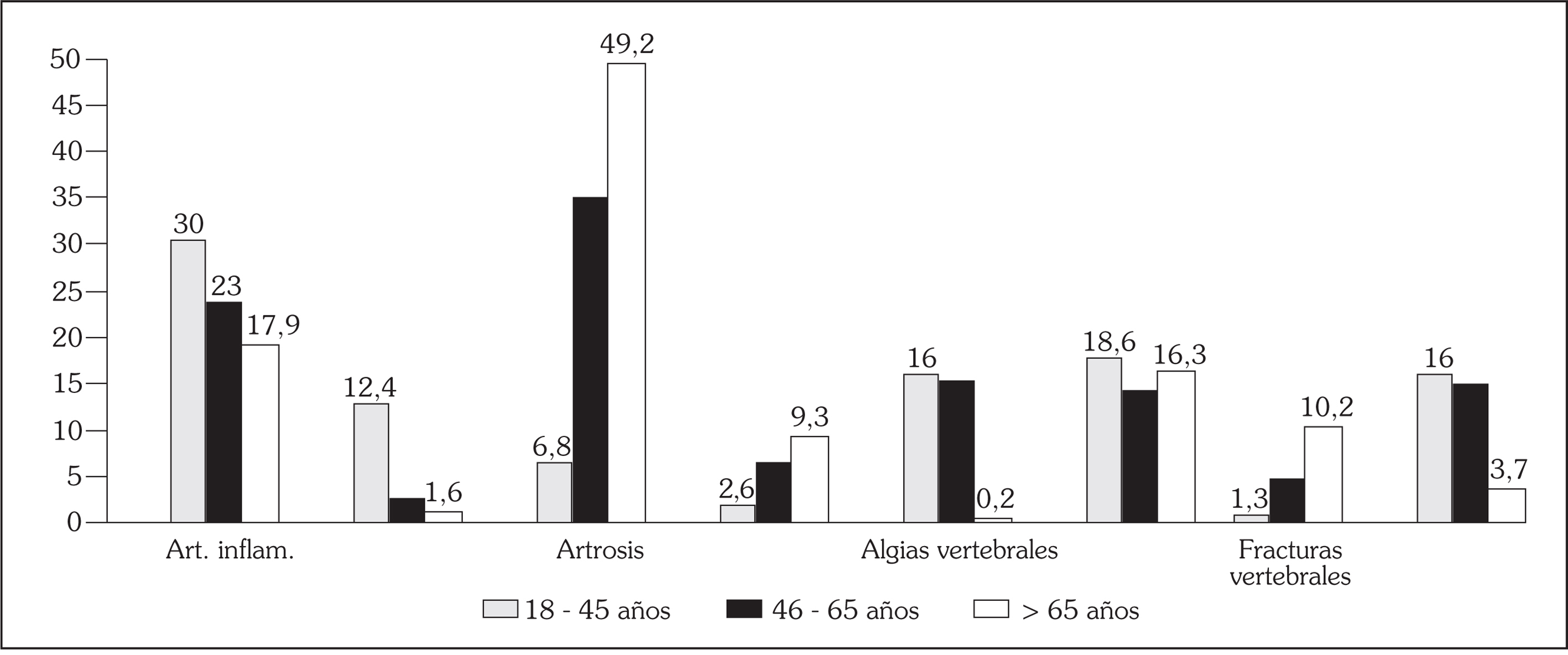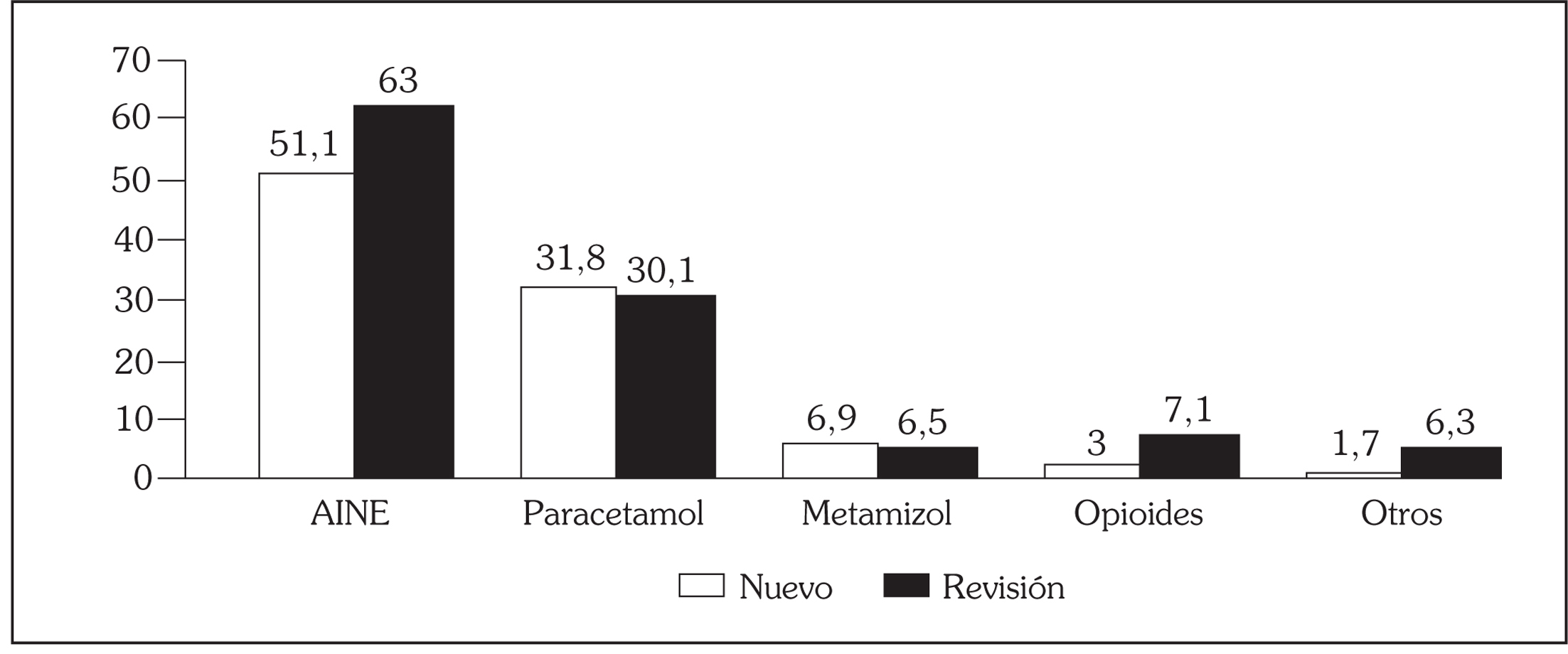Objetivo. Estimar la prevalencia y características del dolor reumatológico en la población adulta española atendida en consultas especializadas de Reumatología. Diseño. Estudio transversal de prevalencia en una población de pacientes atendidos en consultas de Reumatología de hospitales públicos españoles. Sujetos. Mil ciento treinta y cuatro elegidos mediante muestreo aleatorio a partir de listados de pacientes citados, durante un período de una semana, en consultas reumatológicas de cada uno de los hospitales participantes. Variables principales del estudio. Motivo de consulta (paciente de nuevo diagnóstico [PND] o de revisión [PR]), características del paciente (sexo, edad, hábitos [alcohol/tabaco], estado civil), localización, tipo, intensidad, duración, tolerancia y manejo del dolor, tratamiento (farmacológico o no farmacológico) realizado y satisfacción con el tratamiento. Resultados. La prevalencia de dolor en PND fue del 98,6% y en PR del 95,1%, con una prevalencia global del 96%, predominando principalmente en mujeres adultas, sedentarias y con fibromialgia. La frecuencia de dolor agudo fue del 80% y crónico del 20%. La prevalencia de fibromialgia fue del 12% (2,2% en hombres y 15,5% en mujeres). El patrón de dolor dominante actual que prevaleció fue de tipo mecánico. Las patologías asociadas más frecuentes fueron: hipertensión arterial (21,7%), depresión (14,4%), enfermedades digestivas (13,8%) y ansiedad (13,4%). Todas las variables del estudio analizadas cambiaron según edad, sexo y tipo de paciente (PND o PR). El tratamiento más usado fue farmacológico con antiinflamatorios no esteroideos (AINE) en más del 57,6%. El médico prescriptor del tratamiento fue primero el médico general (56,1%) seguido del reumatólogo (14,1 %) en PND y el primero fue el reumatólogo (69,9%) seguido del médico general (16,5 %) en PR. Conclusiones. Los resultados muestran que la prevalencia del dolor reumatológico es muy elevada, predominando principalmente en mujeres adultas con fibromialgia La localización, intensidad, tipo, patología asociada y tratamiento varían según edad, sexo y tipo de paciente. Los fármacos más utilizados para el manejo del dolor son los AINE (58%); los opioides tan sólo se utilizaron en el 6,4% de los pacientes a pesar de que el dolor fue intenso en más de dos tercios.
Palabras clave:
dolor musculoesquelético, fibromialgia, depresión
Objective. To establish the prevalence and characteristics of rheumatologic pain in Spanish adult population cared in specialized rheumatology offices. Desing. Cross selection study in a population of patients cared in rheumatology offices of public Spanish hospitals. Subjects. 1,134 patients selected through random sampling based on waiting lists of patients, during a period of 1 week, in rheumatology offices of each participating hospital. Main outcomes of the study. Reason behind the consultation (a new patient [NP] or a patient for revision [RP]), characteristics of the patient (sex, age, habits [alcohol/tobacco], marital status), location, type, intensity, duration, tolerance and management of pain; treatment (pharmacological or non-pharmacological) carried out; satisfaction with the treatment; and association with fibromyalgia. Results. The prevalence of pain in NP was 98.6% and in RP 95.1%, with a global prevalence of 96%, predominating mainly in adult sedentary women with fibromyalgia. The frequency of acute pain was 80% and this of chronic pain 20%. The prevalence of fibromyalgia was 12% (2.2% in men, and 15.5% in women). The most prevalent pattern of current dominant pain was this of the mechanical type. More frequent associated pathologies were: hypertension (21.7%), depression (14.4%), gastrointestinal diseases (13.8%) and anxiety (13.4%). All variables analyzed in the study showed changes according to age, sex, and type of patientb (NP or RP). Most used treatment was pharmacological; more than 57.6% of patients were receiving NSAIDs. In NP, medical precriber of the treatmen was first the general practitioner (56.1%) followed by the rheumatologist (14.1%); in PR the first one was the rheumatologist (69.9%) followed by the general practitioner (16.5%). Conclusions. Our results show that the prevalence of the rheumatologic pain is very high, predominating mainly in adult women with fibromyalgia. Pain location, intensity, and type, associated pathology, and treatment vary according to age, sex, and type of patient. The most commonly used drugs for pain management were NSAIDs (58%); opiodes were only used in 6.4% of patients even though pain was intense in more than two-thirds.
Keywords:
musculoskeletal pain, fibromyalgia, depression





